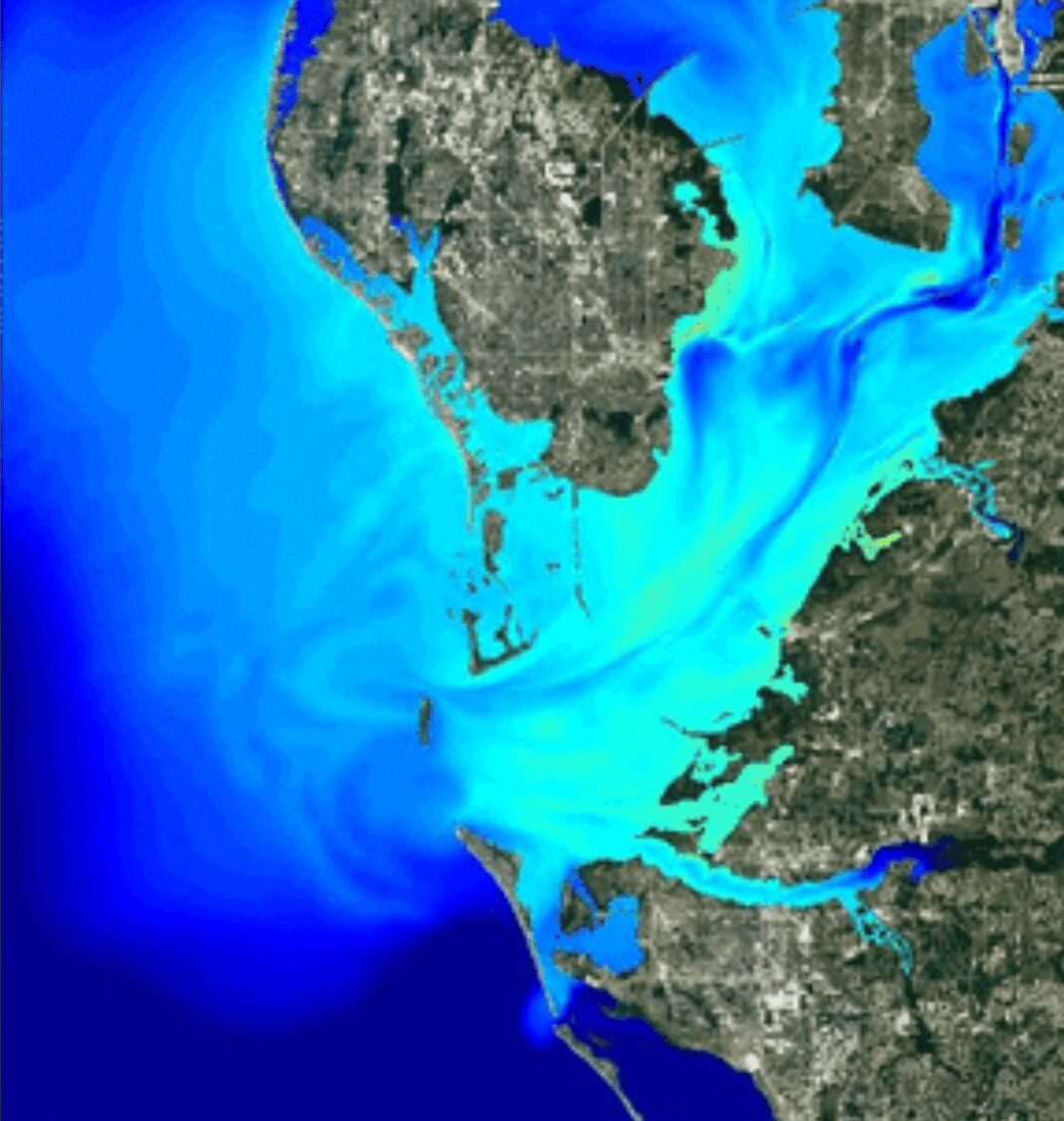TAMPA BAY – The discharge of 215 million gallons of polluted water from Piney Point into Tampa Bay in March and April probably exacerbated the natural growth of toxic algae, bay managers say.
Contrary to researchers at the University of South Florida College of Marine Science in St. Petersburg, officials at the Sarasota Bay Estuary Program and the Tampa Bay Estuary Program agree there is a link between the nutrients in the discharged water and current algae blooms.
The water was intentionally released from March 30 to April 9 to prevent the collapse of a compromised gypsum stack that held a wastewater retention pond at the top. A total collapse could have resulted in a worse spill that threatened to flood nearby homes and businesses, which were evacuated during the event.
Since then, multiple agencies testing local waters have reported blooms of red tide algae and of lyngbya, a type of blue-green algae, or cyanobacteria. Other finds include trichodesmium, another type of cyanobacteria, and brown algae. Red tide produces a brevetoxin, while blue-green algae produces a cyanotoxin; both toxins can be dangerous to people and marine life, and both algae species feed on the phosphorus and nitrogen in the discharged water.
Anna Maria Sound is in dire condition, according to Holmes Beach Mayor Judy Titsworth, one of many local residents who are sounding the alarm.
“I have never in 58 years seen it this sick,” she said. “There is no life.”
Fishing guides have long frequented Tampa Bay waters between the Sunshine Skyway Bridge and Port Manatee, where the discharge occurred, said Rusty Chinnis, The Sun’s outdoor columnist.
“There was never red tide there, and now there is,” he said. “I believe it’s a smoking gun.”
Lyngbya is not a new occurrence locally, but has been worsened by the Piney Point spill, he said.
“Did the Piney Point spills cause the lyngbya blooms or red tide problems we’re seeing? No. But are the nutrients from those discharges likely making it worse? Yes,” said Dr. David Tomasko, executive director of the Sarasota Bay Estuary Program.
“Piney Point added about 200 tons of nitrogen and about 100 tons of phosphorus to our local waters,” he said. “We don’t know where it all went, but it appears that a substantial amount of that nitrogen could have ended up in the macroalgae we are now seeing throughout Anna Maria Sound.”
Algae blooms have been appearing and shifting in Tampa Bay and the Gulf of Mexico since shortly after the Piney Point discharge, according to Ed Sherwood, executive director of the Tampa Bay Estuary Program.
“I suspect that these different blooms are capitalizing on the 200+ tons of nitrogen circulating in Tampa Bay, upper Sarasota Bay and the nearshore Gulf beaches stemming from the original discharge event,” he said. “That is, the nutrients are now cycling though the bay’s ecology and the latest red tide and lyngbya blooms are a manifestation of more nutrients being available in these waters in comparison to a ‘normal’ dry season.”
Dr. Kristen Buck, chemical oceanographer at the University of South Florida College of Marine Science in St. Petersburg, disagrees.
“At this point we simply do not have data to support a direct cause-and-effect relationship between the Piney Point discharge and the occurrence of the red tide, which is of course being detected at several sites within Tampa Bay but also along parts of the Gulf coast,” she said. “Nutrient chemistry in seawater is a complex issue, and this is certainly true for Tampa Bay. Red tides are also a complex phenomenon.”
As water quality decreases, the spotlight is on responsibility for the damage.
The Florida Department of Environmental Protection has advised the owners of Piney Point, HRK Holdings LLC, that the state’s emergency order regarding the incident has expired and that “the company is expected to meet its legal responsibilities as site owner and operator to manage the site to ensure the integrity of the stack system and protect the health, safety and welfare of the public and the environment. DEP remains committed to its stringent regulatory oversight of the facility and to holding HRK accountable for the recent events at the site through all possible legal means.”
HRK filed for Chapter 11 bankruptcy protection in 2011 after an accidental spill of wastewater from Piney Point into Tampa Bay.
































